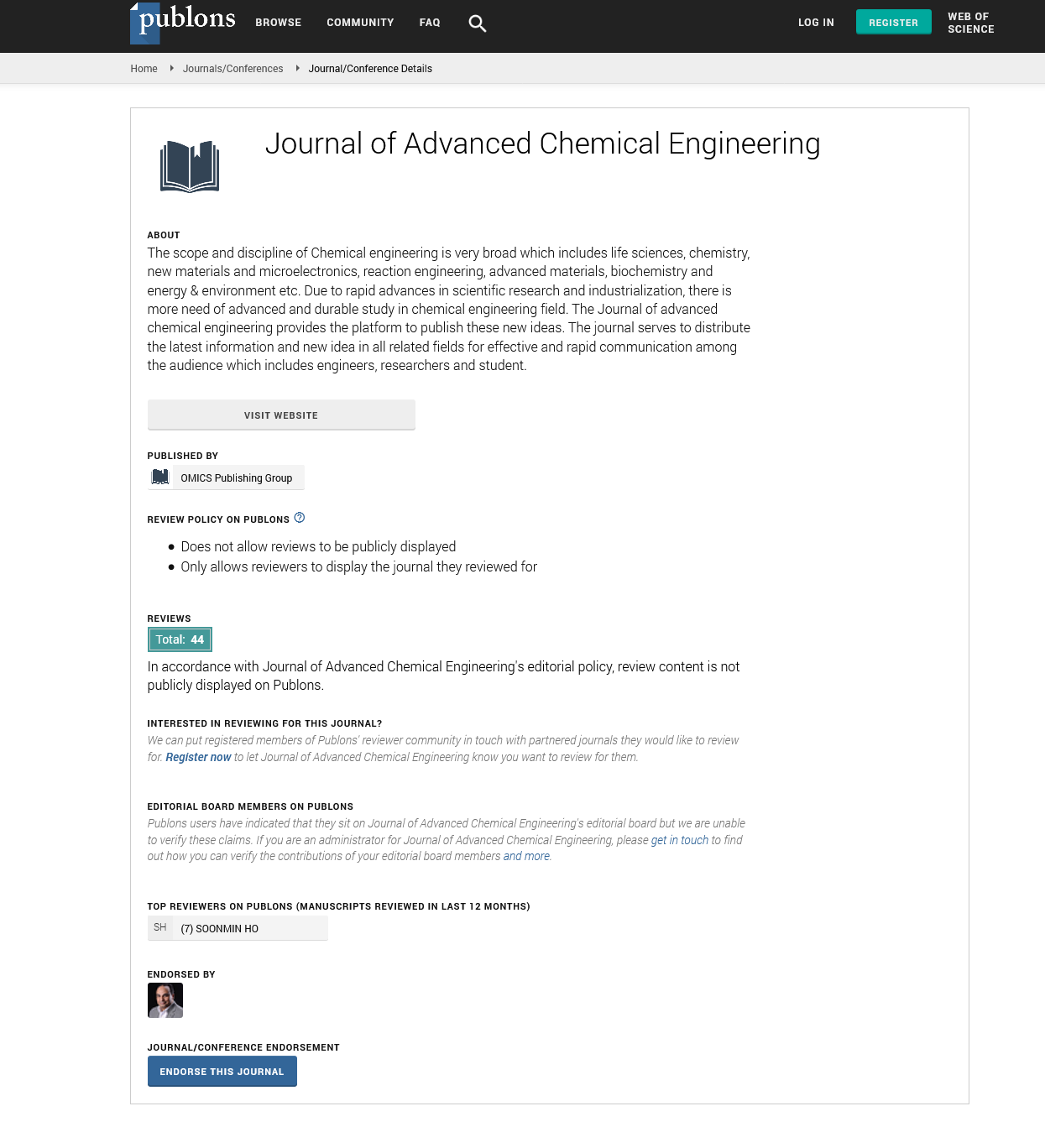Indexed In
- Open J Gate
- Genamics JournalSeek
- Smithers Rapra
- RefSeek
- Directory of Research Journal Indexing (DRJI)
- Hamdard University
- EBSCO A-Z
- OCLC- WorldCat
- Scholarsteer
- Publons
- Geneva Foundation for Medical Education and Research
- Google Scholar
Useful Links
Share This Page
Journal Flyer

Open Access Journals
- Agri and Aquaculture
- Biochemistry
- Bioinformatics & Systems Biology
- Business & Management
- Chemistry
- Clinical Sciences
- Engineering
- Food & Nutrition
- General Science
- Genetics & Molecular Biology
- Immunology & Microbiology
- Medical Sciences
- Neuroscience & Psychology
- Nursing & Health Care
- Pharmaceutical Sciences
Ion conduction mechanism in solid polymer electrolyte by impedance and dielectric spectroscopy
Joint Event on 8th Edition of Biopolymers & Bioplastics & Polymer Science and Engineering Conferences
October 15-16, 2018 | Las Vegas, USA
Namrata Tripathi
Illinois State University, USA
Scientific Tracks Abstracts: J Adv Chem Eng
Abstract:
Increasing global warming triggered the urgent need for the reduction of greenhouse gas emission and pollution. It can be effectively achieved by replacing conventional combustion-engine vehicles with sustainable electric or hybrid vehicles. But the success of electric vehicle is facing challenges associated with lithium-ion batteries such as low energy efficiency, high cost, and risk of fire. To make electric, hybrid vehicles more attractive to consumers, the batteries that power those cars need to be affordable, high performing, long lasting, safe, and operate at maximum efficiency in a wide range of driving conditions and climates. In this regard, solid polymer electrolytes could be a real game-changer creating a perfect battery for an electric vehicle, solving most of the issues like battery lifetime, safety, and cost. However poor ionic conductivity of solid polymer electrolyte limits their practical applications. Technological applications of this class of materials require high ionic conductivity. To enhance the ionic conductivity to the required level and beyond, several new approaches have been adopted. To achieve the required conductivity and to suggest ways for improvement, the conduction mechanism and transport properties of such materials need to be better understood. The conductivity of PNC is mostly a function of the number of charge carriers and their mobility. Hence, to understand the conduction mechanism, it is most important to determine number density and mobility of charge carriers quantitatively. A number of techniques have been used, including nuclear magnetic resonance, transient ionic direct current measurement, dielectric analysis, and electrochemical impedance spectroscopy (EIS) method. I will discuss dielectric analysis and EIS method in detail to understand ion conduction mechanism in polymer nanocomposite.
Biography :
Namrata Tripathi is currently an Instructional Assistant Professor of Physics at Illinois State University, USA. She received her PhD from Indian Institute of Technology Kharagpur, India. Her research has been focusing on solid polymer electrolyte for energy storage devices such as batteries. Her research has provided important insight in structure-property relation in polymer-nanocomposite electrolytes and contributes to the value of future designs of advanced batteries. She serves as an editorial board member of International Journal of Electrical Components and Energy Conversion.
E-mail: ntripat@ilstu.edu

